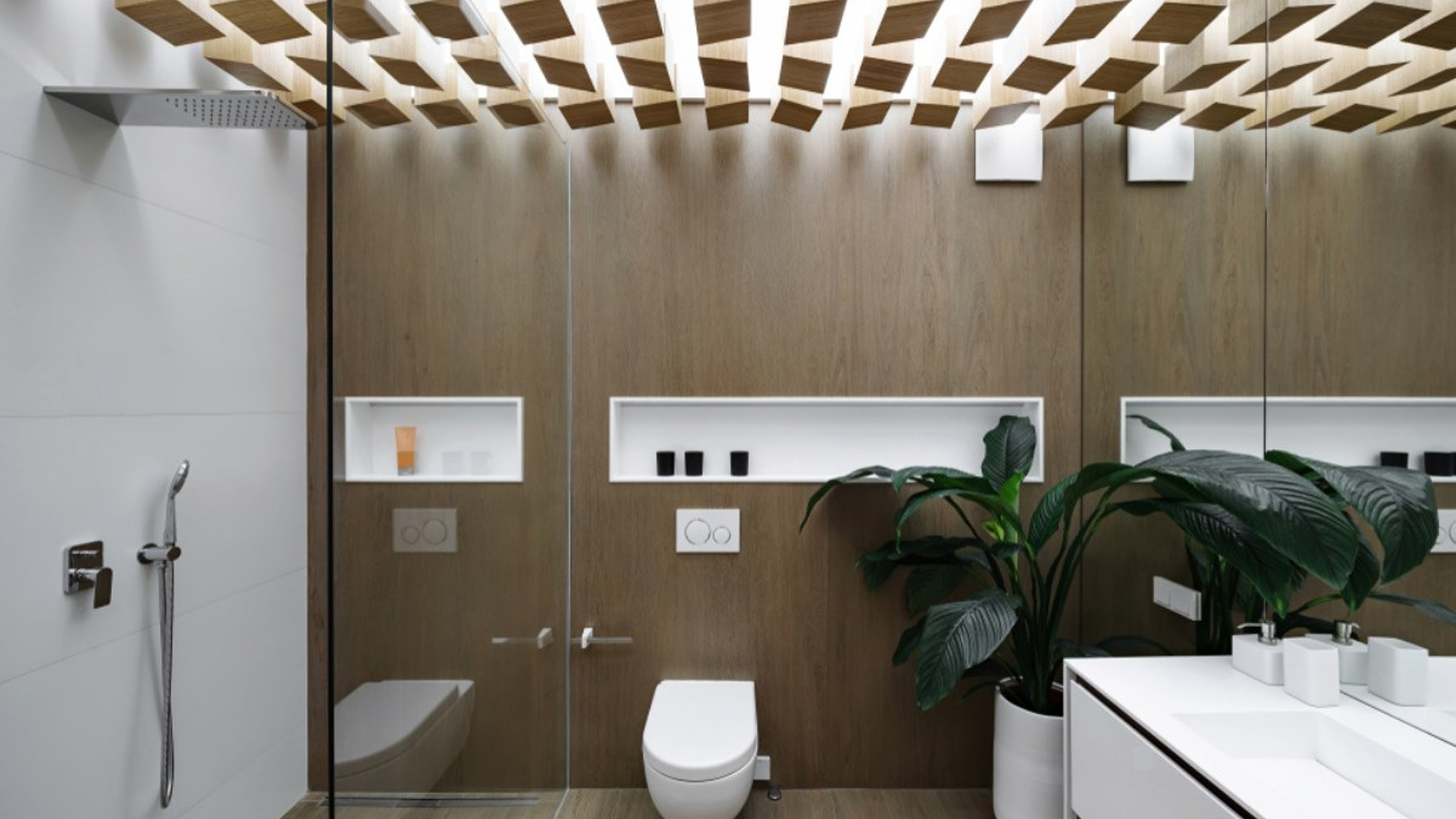


13 March, 2023
Famous Bathroom Ceiling Design Ideas


Home Decoration
When it comes to designing your bathroom, there are numerous factors to consider. Every feature of the space, from the fixtures and furniture to the color scheme and layout, makes an impact on its overall look and feel. And the ceiling is an often-overlooked component of bathroom design.
Your bathroom ceiling, on the other hand, can become a spectacular focal point of the area with the correct design features. In this blog post, look at some well-known bathroom ceiling design ideas that can turn your bathroom into a luxury sanctuary.
The Serene Impact of a Bathroom Ceiling Design
The design of the bathroom ceiling can make the room feel more peaceful as a whole. The room can feel bigger and brighter when the ceiling is finished well. Use light colors like white or light blue to make the room feel airy and open. This is a simple way to do this that works well.
Adding texture, like wood or tiles, can also improve the design and make the room feel calmer. Soft lighting can also create a relaxing atmosphere, which is great for unwinding after a long day. Overall, the design of the bathroom ceiling can have a big effect on how the room looks and feels.
Coffered Ceiling
Coffered ceilings are a popular bathroom choice due to their classic and beautiful appearance. A grid pattern of recessed squares or rectangles adds depth and dimension to this sort of ceiling design.
To construct a coffered ceiling that compliments the rest of your bathroom's decor, you can use various materials, such as wood, metal, or plaster. Crown molding along the edge of the ceiling can add to the elegance of the coffered ceiling.
Vaulted Ceiling
A vaulted ceiling is a common bathroom ceiling design that may provide a sense of grandeur to your area. This design incorporates a sloping ceiling that creates an impression of depth and space in the bathroom.
Wood, plaster, or metal can be used to create a vaulted ceiling. These can also be coupled with skylights or tall windows to maximize natural light.
Beadboard Ceiling
A beadboard ceiling is a timeless and classic aspect of bathroom decor that provides texture and warmth to the space. This sort of ceiling is characterized by thin, vertical boards that impart a beautiful and rustic appearance.
Beadboard is available in a range of materials, such as wood, vinyl, and PVC, and can be stained or painted to complement the rest of the bathroom's décor.
Tin Ceiling
Those who want to add a vintage touch to their bathroom might consider installing a tin ceiling. This sort of ceiling design incorporates embossed tin tiles to provide a distinctive and decorative element in the room.
Ceilings made of tin can be painted or left unfinished to highlight their inherent beauty. They are commonly found in ancient homes but may also be included in contemporary bathroom designs to provide a touch of character and charm.
Mirrored Ceiling
Anyone seeking to create a beautiful and spectacular bathroom design can also choose a mirrored ceiling. The reflected surface of a mirrored ceiling will intensify your room's natural light and offer the appearance of space.
This style of ceiling is ideal for bathrooms with little space or natural light. Using a mirrored ceiling with other architectural elements, such as chandeliers or pendant lights, will enhance the beauty as well as the sophistication of a room.
Factors to consider before settling on a particular bathroom ceiling design
There are several factors to consider prior to deciding on a bathroom ceiling design. Some of these are the following:
Ceiling height - If your ceiling is low, you can consider a flush or semi-flush mount ceiling. But if you have a high ceiling, you should have a drop or vaulted ceiling.
Overall bathroom style - If your bathroom has a contemporary vibe, select a ceiling design that is clean and straightforward. If your bathroom is more conventional, you may want to explore a more elaborate ceiling pattern.
Lighting - Your bathroom's illumination might be affected by the architecture of the ceiling. If natural light is abundant, a simple ceiling design may work best. Consider a reflecting ceiling if more artificial illumination is required.
Care and maintenance - Certain ceiling designs demand greater care than others. A textured ceiling, for instance, may require more maintenance than a smooth ceiling. Assess how much time and effort you're willing to invest in preserving the ceiling of your bathroom.
Materials - Many materials, including plaster, drywall, wood, and metal, can be used to construct ceilings. Consider how each material's durability and moisture resistance will fare in a bathroom environment.
Budget - Ceiling designs can range from simple and inexpensive to intricate and costly. When deciding on a ceiling design, examine your budget and pick one that falls within your budgetary limits.
Ceiling height - While selecting a design, the ceiling height should be taken into account. If the ceiling is low, you may want to avoid heavy or bulky patterns that can cramp the room.
For more information, feel free to contact Apex Group.

.png)
.png)